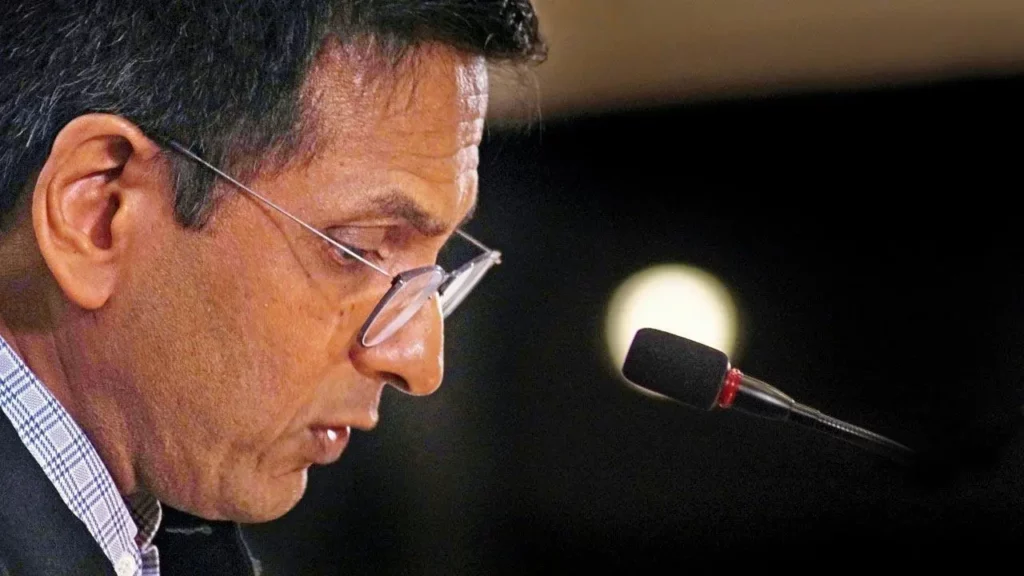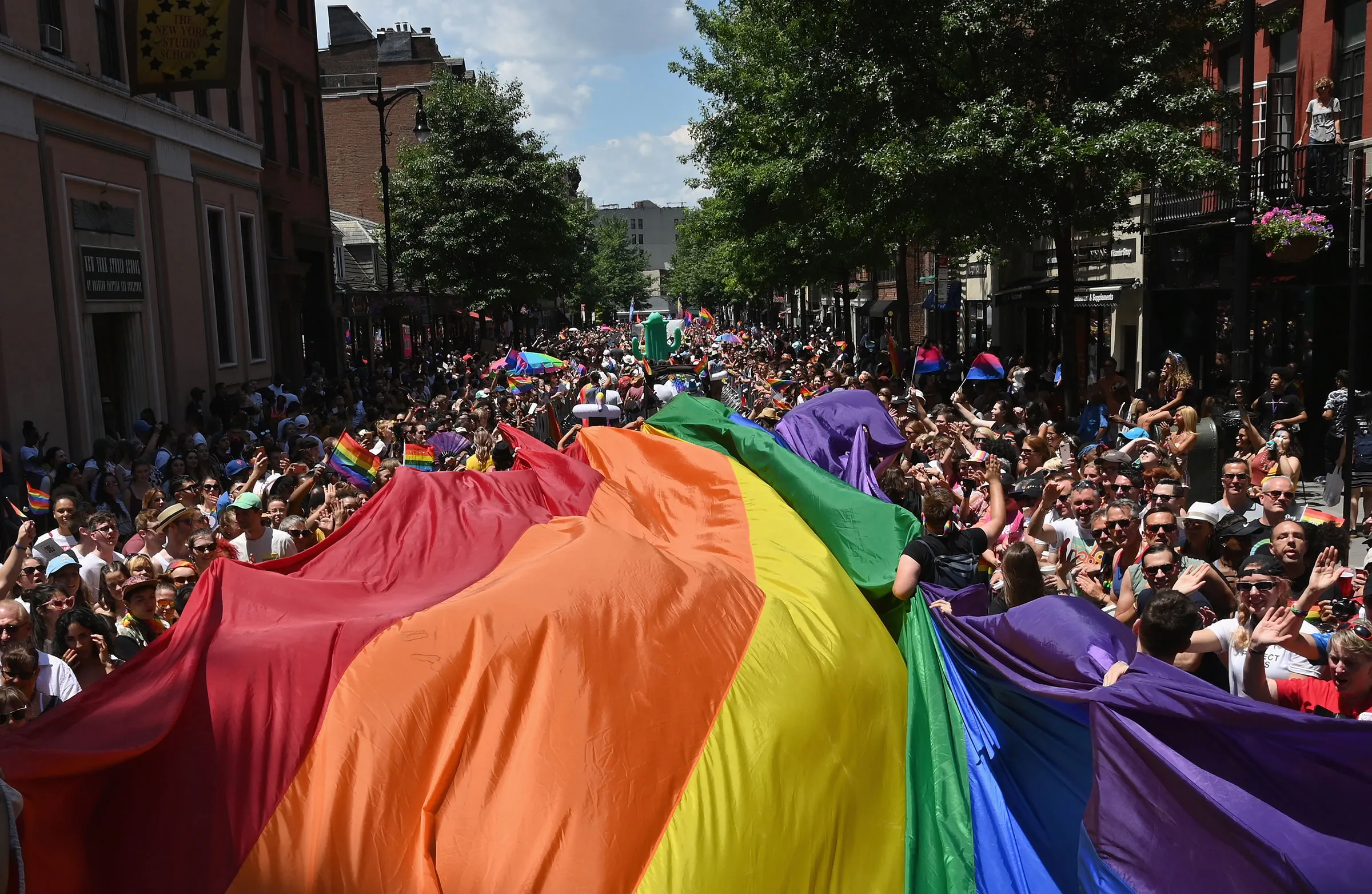On 17th October, the Indian Supreme Court delivered a historic judgment on the recognition of Same Sex Marriage. The Indian Supreme Court refused to recognize the same sex marriage.
There was a bench of five judges, two judges Justice Dhananjay Yashwant Chandrachud who is also current CJI of India, and Justice Kishan Kaul gave their separate judgment in favor of Same Sex Marriage, but, the other three Judges, Justice Ravindra Bhatt, Justice Narsimha, and Justice Hima kohli pronounced their judgments against the recognition of Same Sex Marriage.
In this case, there were 21 Petitions, the grievance of the petitioners (who were members of the LGBTQIA+ community) was not that society discriminates against them in an informal (and invisible) manner. That is a secondary but an equally important stage of how discrimination pans out against a marginalised class.
The petitioners claimed that they are discriminated on a more formal (and visible) level. The petitioners contended that the State through the operation of the current legal regime discriminates against the queer community by impliedly excluding the queer community from a civic institution: marriage.
The petitioners invoked the equality code of the Constitution to seek legal recognition of their relationship with their partner in the form of marriage. The petitioners did not seek exclusive benefits for the queer community, which are unavailable to heterosexuals. They claim that the State ought to treat them on par with the heterosexual community.
Counsel for the petitioners and some counsel for the respondents advanced extensive submissions on the various forms of violence and discrimination that society and the state machinery inflict upon the queer community, and especially queer couples.
Directions of Justice Chandrachud

Counsel sought directions to obviate such violence and discrimination. Justice DY Chandrachud made following directions and conclusions in his Judgment-
a) The Union Government, State Governments, and Governments of Union Territories are directed to:
i. Ensure that the queer community is not discriminated against because of their gender identity or sexual orientation;
ii. Ensure that there is no discrimination in access to goods and services to the queer community, which are available to the public;
iii. Take steps to sensitise the public about queer identity, including that it is natural and not a mental disorder;
iv. Establish hotline numbers that the queer community can contact when they face harassment and violence in any form;
v. Establish and publicise the availability of ‘safe houses’ or Garima Grehs in all districts to provide shelter to members of the queer community who are facing violence or discrimination;
vi. Ensure that “treatments” offered by doctors or other persons, which aim to change gender identity or sexual orientation are ceased with immediate effect;
vii. Ensure that inter-sex children are not forced to undergo operations with regard only to their sex, especially at an age at which they are unable to fully comprehend and consent to such operations;
viii. Recognize the self-identified gender of all persons including transgender persons, hijras, and others with sociocultural identities in India, as male, female, or third gender.
No person shall be forced to undergo hormonal therapy or sterilisation or any other medical procedure either as a condition or prerequisite to grant legal recognition to their gender identity or otherwise;
b) The appropriate Government under the Mental Healthcare Act must formulate modules covering the mental health of queer persons in their programmes under Section 29(1). Programmes to reduce suicides and attempted suicides (envisaged by Section 29(2)) must include provisions which tackle queer identity;
Directions to Police
c) The following directions are issued to the police machinery:
i. There shall be no harassment of queer couples by summoning them to the police station or visiting their places of residence solely to interrogate them about their gender identity or sexual orientation;
ii. They shall not force queer persons to return to their natal families if they do not wish to return to them;
iii. When a police complaint is filed by queer persons alleging that their family is restraining their freedom of movement, they shall on verifying the genuineness of the complaint ensure that their freedom is not curtailed;
iv. When a police complaint is filed apprehending violence from the family for the reason that the complainant is queer or is in a queer relationship, they shall on verifying the genuineness of the complaint ensure due protection; and
v. Before registering an FIR against a queer couple or one of the parties in a queer relationship (where the FIR is sought to be registered in relation to their relationship), they shall conduct a preliminary investigation in terms of Lalita Kumari v. Government of U.P[1], to ensure that the complaint discloses a cognizable offence.
The police must first determine if the person is an adult. If the person is an adult and is in a consensual relationship with another person of the same or different gender or has left their natal home of their own volition, the police shall close the complaint after recording a statement to that effect.
Conclusions and orders of enforcement
In view of the discussion above, the following are our conclusions:
a. This Court is vested with the authority to hear this case. Under Article 32, this Court has the power to issue directions, orders, or writs for the enforcement of the rights in Part III;
b. Queerness is a natural phenomenon known to India since ancient times. It is not urban or elite;
c. There is no universal conception of the institution of marriage, nor is it static. Under Articles 245 and 246 of the Constitution read with Entry 5 of List III to the Seventh Schedule, it lies within the domain of Parliament and the state legislatures to enact laws recognizing and regulating queer marriage;
d. Marriage has attained significance as a legal institution largely because of regulation by the state. By recognizing a relationship in the form of marriage, the state grants material benefits exclusive to marriage;
e. The State has an interest in regulating the ‘intimate zone’ to democratize personal relationships;
f. The issue of whether the Constitution recognizes the right to marry did not arise before this Court in Justice KS Puttaswamy (9J), Shafin Jahan, and Shakti Vahini;
g. The Constitution does not expressly recognize a fundamental right to marry. An institution cannot be elevated to the realm of a fundamental right based on the content accorded to it by law. However, several facets of the marital relationship are reflections of constitutional values including the right to human dignity and the right to life and personal liberty;
h. This Court cannot either strike down the constitutional validity of SMA or read words into the Special Marriage Act because of its institutional limitations. This Court cannot read words into the provisions of the SMA and provisions of other allied laws such as the Indian Succession Act and the HSA because that would amount to judicial legislation.
The Court in the exercise of the power of judicial review must steer clear of matters, particularly those impinging on policy, which fall in the legislative domain;
i. The freedom of all persons including queer couples to enter into a union is protected by Part III of the Constitution. The failure of the state to recognise the bouquet of entitlements which flow from a union would result in a disparate impact on queer couples who cannot marry under the current legal regime. The state has an obligation to recognize such unions and grant them benefit under law;
j. In Article 15(1), the word ‘sex’ must be read to include ‘sexual orientation’ not only because of the causal relationship between homophobia and sexism but also because the word ‘sex’ is used as a marker of identity which cannot be read independent of the social and historical context;
k. The right to enter into a union cannot be restricted based on sexual orientation. Such a restriction will be violative of Article 15. Thus, this freedom is available to all persons regardless of gender identity or sexual orientation;
l. The decisions in Navtej Johar v. Union of India (2018) and Justice KS Puttaswamy (9J) v. Union of India (2017) recognize the right of queer couples to exercise the choice to enter into a union. This relationship is protected from external threat. Discrimination on the basis of sexual orientation will violate Article 15;
m. Transgender persons in heterosexual relationships have the right to marry under existing law including personal laws which regulate marriage;
n. Intersex persons who identify as either male or female have the right to marry under existing law including personal laws which regulate marriage;
o. The state must enable the LGBTQ community to exercise its rights under the Constitution. Queer persons have the right to freedom from coercion from their natal families, agencies of the state including the police, and other persons;
p. Unmarried couples (including queer couples) can jointly adopt a child. Regulation 5(3) of the Adoption Regulations is ultra vires the Juvenile Justice Act, Articles 14, and 15. Regulation 5(3) is read down to exclude the word “marital”. The reference to a ‘couple’ in Regulation 5 includes both married and unmarried couples as well as queer couples.
The principle in Regulation 5(2) (a) that the consent of spouses in a marriage must be obtained if they wish to adopt a child together is equally applicable to unmarried couples who seek to jointly adopt a child. However, while framing regulations, the state may impose conditions which will subserve the best interest and welfare of the child in terms of the exposition in the judgment;
q. The CARA Circular disproportionately impacts the queer community and is violative of Article 15;
r. The Union Government, State Governments, and Governments of Union Territories shall not discriminate against the freedom of queer persons to enter into union with benefits under law; and
s. We record the assurance of the Solicitor General that the Union Government will constitute a Committee chaired by the Cabinet Secretary for the purpose of defining and elucidating the scope of the entitlements of queer couples who are in unions.
Committee for Queer Community
The Committee shall include experts with domain knowledge and experience in dealing with the social, psychological, and emotional needs of persons belonging to the queer community as well as members of the queer community.
The Committee shall before finalizing its decisions conduct wide stakeholder consultation amongst persons belonging to the queer community, including persons belonging to marginalized groups and with the governments of the States and Union Territories.
The Committee shall in terms of the exposition in this judgment consider the following:
i. Enabling partners in a queer relationship (i) to be treated as a part of the same family for the purposes of a ration card; and (ii) to have the facility of a joint bank account with the option to name the partner as a nominee, in case of death;
ii. In terms of the decision in Common Cause v. Union of India[2], as modified by Common Cause v. Union of India[3], medical practitioners have a duty to consult family or next of kin or next friend, in the event patients who are terminally ill have not executed an Advance Directive. Parties in a union may be considered ‘family’ for this purpose;
iii. Jail visitation rights and the right to access the body of the deceased partner and arrange the last rites; and
iv. Legal consequences such as succession rights, maintenance, financial benefits such as under the Income Tax Act 1961, rights flowing from employment such as gratuity and family pension and insurance.
The report of the Committee chaired by the Cabinet Secretary shall be implemented at the administrative level by the Union Government and the governments of the States and Union Territories.
Reference
Supriya @Supriyo Chakraborty & oth. v. Union of India (2023)
[1] (2014) 2 SCC 1
[2] (2018) 5 SCC 1
[3] 2023 SCC OnLine SC 99
